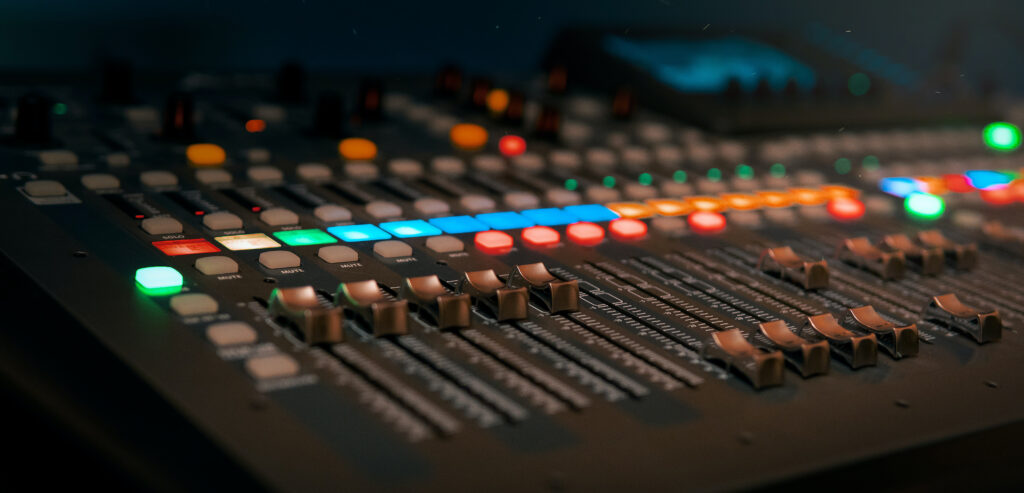https://www.youtube.com/watch?v=ctqgePHsCeQ
Review of the Freya+ and Vidars as monoblock Power Amps
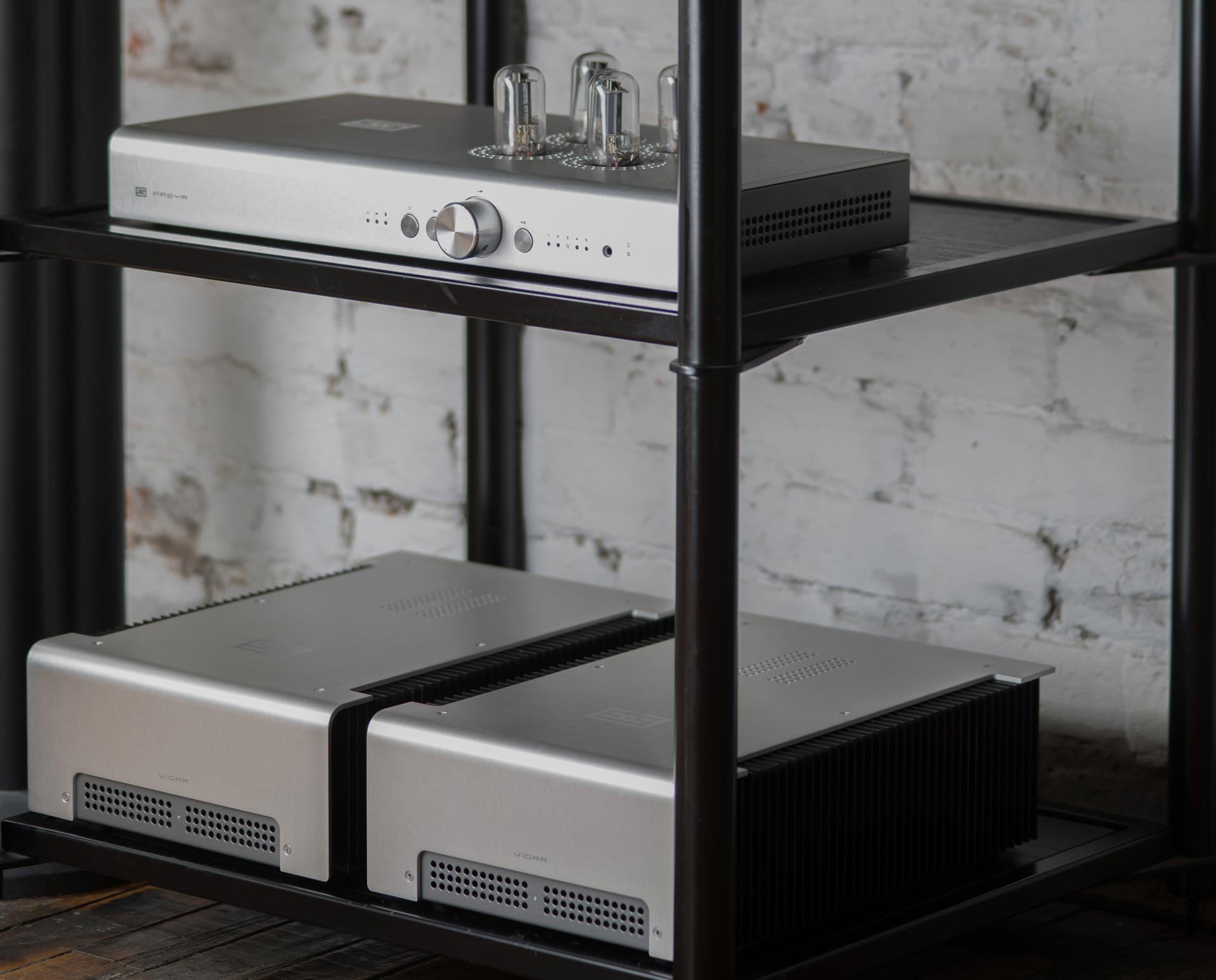
Magnepan LRS speakers demand big, high quality amplifiers and deserve a smooth and detailed balanced pre-amp.
Enter, Schiit – a Californian audio company that has taken on the high-end, high-cost audiophile device makers with comparable products at budget prices.
The owners of Schiit Audio, Jason Stoddard and Mike Moffat, know how to disrupt the Hi-Fi industry.
Respected reviewers agree that Schiit’s highly awarded audio devices, deliver superb sound at extraordinary value for money.
In this review, Schiit’s Freya+ balanced, 4 tube pre-amp is coupled with Schiit’s Vidar amplifiers as mono blocks, driving the Magnepan 4 Ohm, LRS speakers.
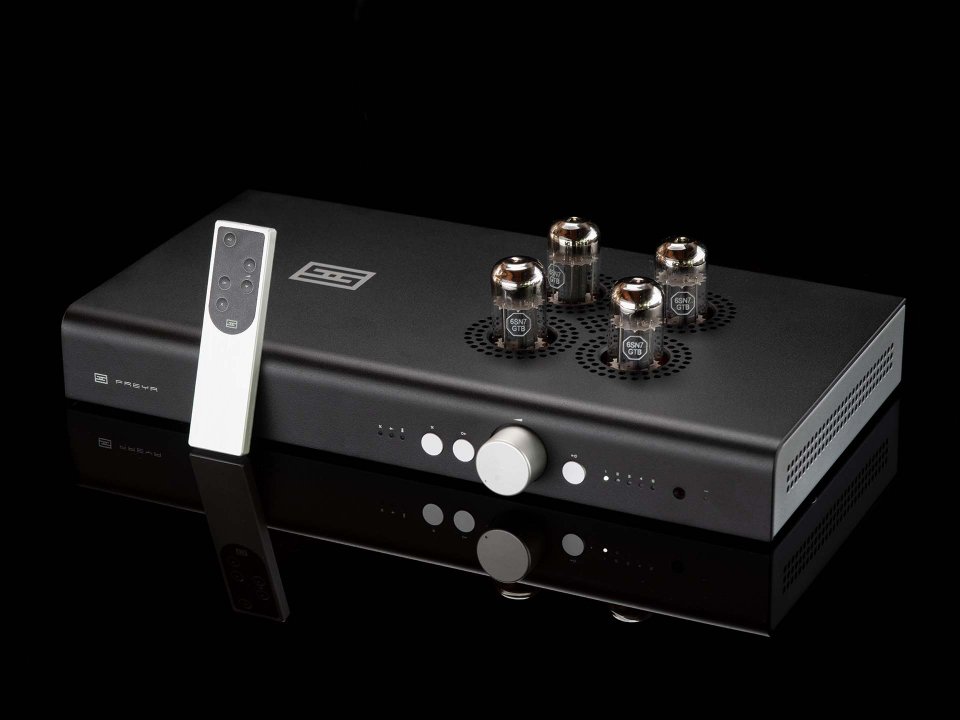
Freya+ is a refinement of the original Freya, with higher performance, more features, and enhanced ease of use and it’s still a true no-excuses, balanced, remote-control preamp. Unlike many of its higher priced competition, you can switch between passive, differential JFET buffer and differential tube gain modes to perfectly match your equipment and the overall sound.
The new Freya+ utilises a fine control 128-step relay-switched stepped volume control with perfect channel matching that gives you near-unmeasurable distortion and you control it all with the included remote for $US949.
There’s five inputs – two XLR balanced and 3 RCA inputs and three outputs including the XLR balanced output stage.
Freya+’s all-new tube stage with new-production 6SN7 tubes, DC heaters and semi-circlotron noise-cancelling output stage that is whisper-silent and turns off when you’re not using it.
The Freya+ uses differential buffers. That means they convert single-ended signals to balanced, so you can interface more easily throughout your system. In addition, you can use it to convert SE sources to drive mono Vidars as we do in this review.

The Schiit Vidar is nothing less than an intelligent Class-AB with a linear-supply, microprocessor-controlled, power-doubling, dual-mono capability, drives-almost-anything power amp. Into 8 Ohms it delivers 100W RMS stereo and 200W RMS stereo into 4 Ohms with 400W RMS 8 Ohms mono at THD 0.01%. It has a weighty 600VA transformer with dual mono rails so the unit is a hefty 10 kilos or 22 pounds. Its very hard to find this much audiophile ready Class A/B grunt under $1,000.
In Vidar, a microprocessor oversees all the important aspects of amplifier operation, from DC offset to over-current and over-temperature faults. This provides stable, safe operation without invasive current-limiting, fuses, or active devices in the power supply path.
Simply put, Vidar makes sure it’s operating optimally at all times—and protects itself when it needs to, so you can be assured of excellent performance. The passive radiators form the sides of the Vidar and the whole unit does get warm with constant playing, but not too warm. There are no switching supplies, no fans and nothing in the signal path but music— all for $US699 each.
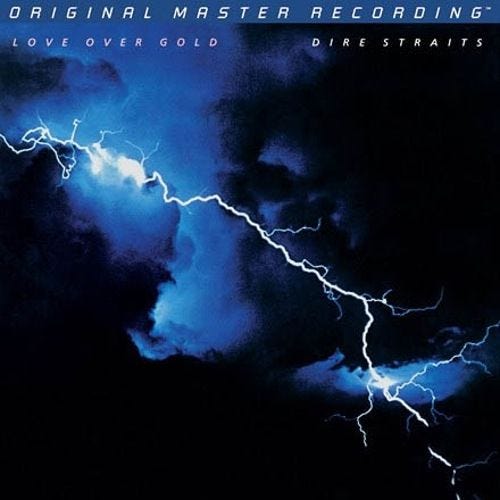
Listening
These are my standard ‘go-to’ tracks that were played constantly for six weeks during this review.
Two Fisted Love – Phoebe Snow
Theme from Superman – John Williams
Crown Imperial – Frederick Fennell, Eastman Wind Ensemble
Harbour Lights – Boz Scaggs
Private Investigations – Dire Straits
Swan Lake – Andre Previn, LSO
Hot August Night – Neil Diamond
Peace Train – Lincoln Mayorga, Sheffield Lab
Amuseum – James Newton Howard, Sheffield Lab
It Must Be You – Dave Grusin, Sheffield Lab
I’m Not In Love – Diana Krall
Don’t Dream Its Over – Diana Krall
The Look of Love – Diana Krall
Raise Me Up – Jon Mamonski
Finale – Maurice Jarre, Ben Hur Filmtrack
Things Ain’t What They Used To Be – VicPol Showband Live
Dance with Me – Earl Klugh
Walk Between the Raindrops – Donald Fagen
True Love Ways – Buddy Holly String Sessions
Organ Symphony – Saint Saens, Daniel Barenboim, Chicago Symphony Orchestra
To my absolute delight, the sound stage was vast yet focussed with voices and instruments clearly placed with a high level of holographic detail. The Freya+ and mono blocked Vidars are a perfect match for the demanding Magnepan LRS speakers measuring a distortion free 80-90DB of dynamic sound pressure at 3 metres with plenty left in the tank and the volume set at 1 o’clock and that’s loud bordering on discomfort for some.
With the Freya+ in Tube mode, the Vidars sounded clean with a slight warm effect that really suited the LRS open sound signature – a perfect match that brought voices like Diana Krall to the higher front of the sound stage as if she was standing in front of you. It gave me goose bumps.
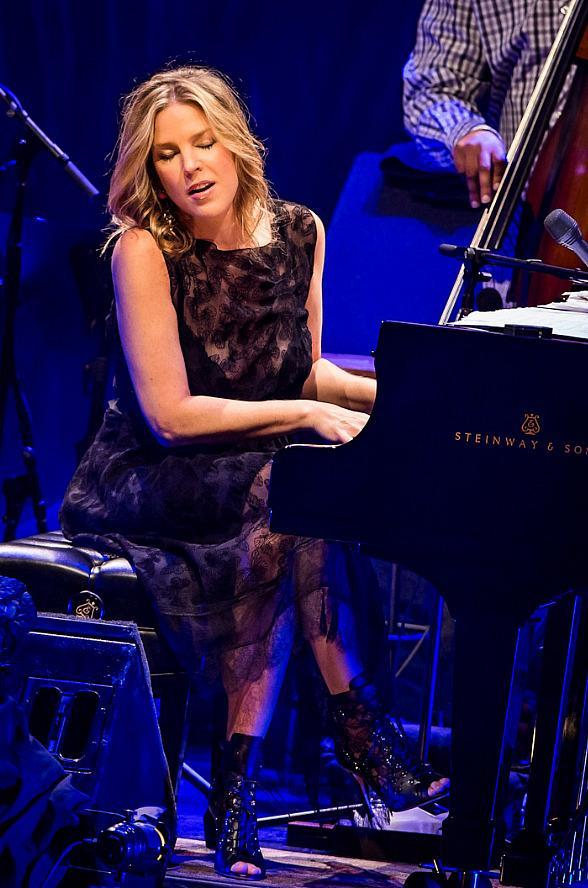
Highs
The orchestral strings had plenty of flesh and bowing detail especially in the symphony tracks and Hot August Night which is very demanding on audio equipment that can often deliver a harshness to the strings that’s quite ugly, but not the Schiit – the fleshy detail is there.
Mids
There’s the slightest warm effect to the mids with the Freya+ tubes in play and that’s just right for voices, yet brass like trumpets, saxes and trombones are clear and textured. Acoustic guitars reveal their timbre and pluck and there’s no nasty 2nd – 3rd order harmonic distortion. Mark Knofler’s nylon string guitar in ‘Private Investigation’ is outstanding. As is the percussion – clear and textured and perfectly placed on the sound stage in this track.
Bass
A great test is the double bass and bass drum in Diana Krall’s ‘The look of Love’. Often the two are poorly separated but with Schiit on board, the double bass is clear, tight and focussed whilst the bass drum plays tightly on the floor.
Likewise in Saint Saens Organ Symphony, the pipe organ bass resonates clearly – and that’s no mean feat for audio equipment at any price. Halfway through ‘Private Investigations’ , bassist John Illsey picks a regular single note.
The reference sound is grippingly tight with a controlled resonance and the Schiit gear delivers.
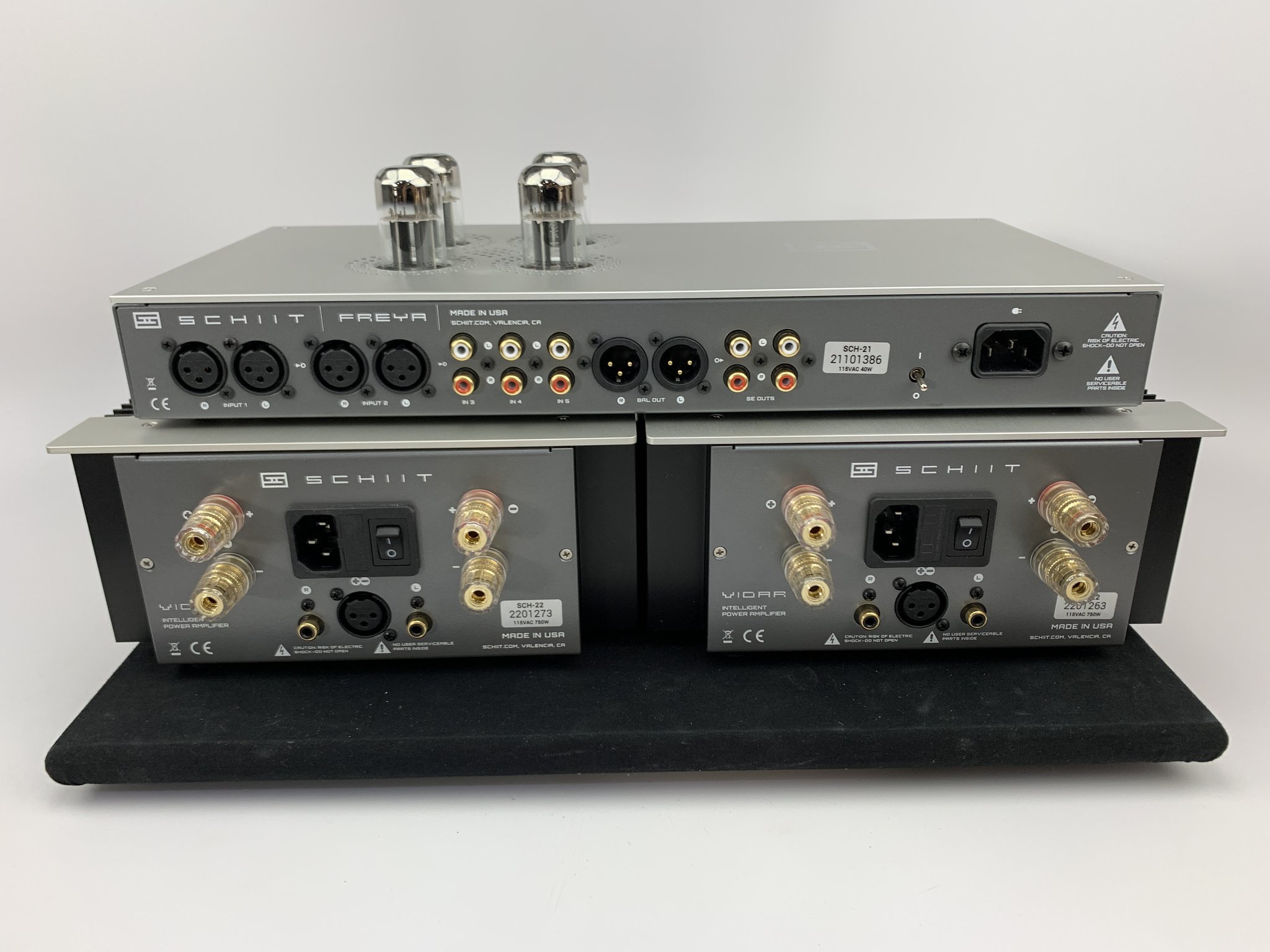
What Schiit show, is that audiophile quality sound is as much about how much detail it allows untainted through the pre-amp and power amplification without adding unwanted effects. The best sign of quality audiophile equipment and all this, no matter how demanding your speakers are for $US2350.
Jon Mamonski

